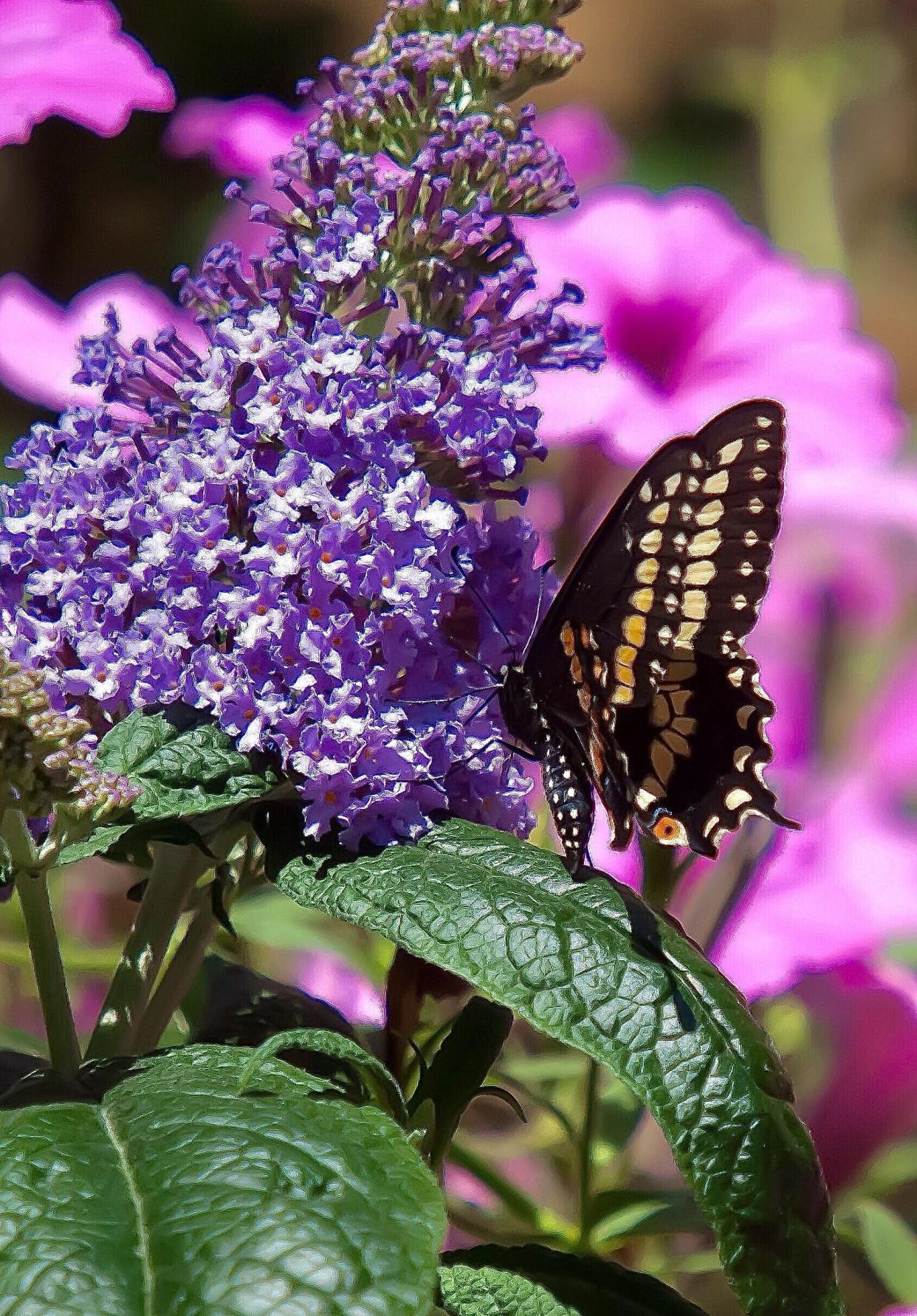Master Gardener: Using native plants can support wildlife
How do you pick which kind of plants you want in your flower bed or landscaping? Many people may want something that really looks nice. Others may want to plant it and forget it so there is little upkeep or care required. Still others may have an eyesore or rough patch in the garden that needs some reviving.
Let’s consider a few things to think about when searching for plants and shrubs. These might be cost of the plants, location for the right fit and upkeep requirements. An important next step is taking the time to learn about the plants you might choose.

Native plants drawing interest
Have you ever heard of native plants? I am guessing so, but it is a relatively new buzzword in the average person’s vocabulary. I think I associate it with the scarcity of the monarchs. In general, many plants on the side of the road were sprayed with weed killer that resulted in most milkweed plants being destroyed. Actually, the decline in monarchs was noticed in the 1950s and then dramatically in early 2000. Fewer milkweed plants meant there was nowhere for the momma monarchs to deposit their eggs.
There are many definitions of “native” plants versus “naturalized” plants. The United States National Arboretum describes a native plant “as one that occurs naturally in a particular region, ecosystem or habitat without direct or indirect human intervention. The flora present at the time Europeans arrived in North America is the species native to the eastern United States.”
What’s the big deal about native plants? Well, native plants are accustomed to living in a certain area. They require less water and upkeep since they just "fit in.” Native plants are supported by the soil, water supply and the varying weather conditions. Their root systems run deep and their stems can handle the harsh sun and the blowing winds.
Since plants and animals share the same ecosystems, they are dependent on one another. They form a symbiotic relationship with their surroundings, including the microscopic organisms in the soil. Many insects depend on native plants for nutrition and as a drop-off location for their new family. Insects lay their eggs on host plants.
One example of a non-native plant that many people choose for the corners of their flower beds is the butterfly bush, Buddleja davidii. This beautiful flowering shrub is a food source of nectar for only a few adult species of butterflies. However, no insects use it as a home for their eggs or larva.
There are many native choices that supply seasonal food in the form of nectar and also can be the host site for hundreds of insect species. The butterflyweed (asclepias tuberosa) grows about 1½-feet tall and blooms beautiful orange blooms from May through September. This plant attracts butterflies and hummingbirds and is a host site for three species of butterflies: grey hairstreak, the Mmonarch and the queens. Another interesting native plant is false indigo (Baptisia australis). This beauty stands about 3 feet tall and blooms for about three weeks in the late spring and attracts butterflies, bees and hummingbirds. After blooming what remains is blue-green foliage with interesting seed pods that turn black toward the end of the season.
Native plants offer insect, bee favorable options
Some native plants bloom later in the season and create quite a display. New England asters (aster novae-angliae) bloom in late summer until first frost. They grow beautiful purple flowers that can get quite tall but can be cut back until early July to control their height. Their pollen feeds bee flies, bumblebees, miner bees and leaf cutter bees. Butterfly and moth caterpillars feed on their stems and leaves. Goldenrod (Solidago altissima) is a striking tall native plant that has more than 100 species that bloom late July through October. They provide food for insects before the harsh weather season. Goldenrod is sometimes confused for ragweed, which may cause allergies. However, goldenrod is pollinated by insects and the pollen is too heavy to be dispersed into the air.
About one-third of the food we consume has been pollinated by a honeybee. An ecosystem that has a large variety of native plants offers a sanctuary for a multitude of insects that play a variety of roles. Some eat harmful bugs and, most importantly, pollinate our trees and shrubs, which means everyone is happy: insects, animals and people.
Choosing native plants takes a little bit of research. Some of the plants at certain nurseries may be cultivars of the original. These modifications may alter some part of the plant making them prettier in your garden but less appealing to the native insects. It is important to ask the nursery supplier if this is a true native plant. Please use the website ohionativegrowers.org to locate a reputable supplier. You might have to travel a bit to find a supplier, but it will be worth it. Another option is to search for a seed swap or drive around the neighborhood and look for a neighbor that has a beautiful patch of black-eyed Susans. Gardeners tend to share.
Some plants I like that also offer an array of color are the red cardinal flower, the purple bee balm and yellow black-eyed Susans. If you want a variety of colorful flowers that require little care and less watering, please consider planting some native plants. Locally sourced native plants allow us to live in harmony with nature.
Linda Twarek is a master gardener with the Ohio State University Extension offices in Sandusky and Ottawa counties.
This article originally appeared on Fremont News-Messenger: Master Gardener: Native Ohio plants support ecosystems, local insects
